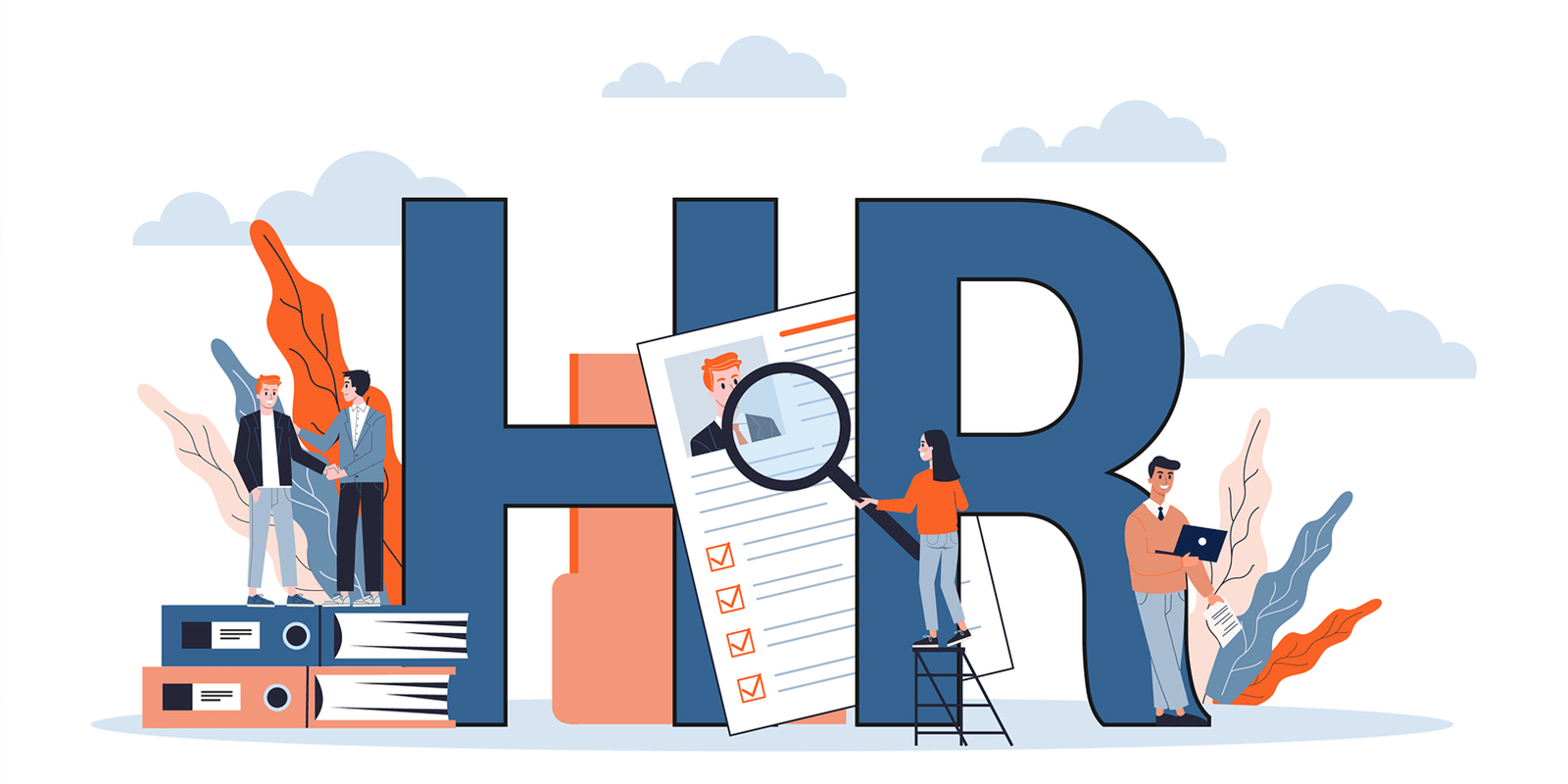Strategic human resource management is the connection between a company’s human resources and its strategies, objectives, and goals. The aim of strategic human resource management is to provide clear strategies for how to utilize human resources, provide human resources with real choices in their roles and actions, provide global organizations with strategies and methods for allocating global resources and managing them globally. indicate how strategic human resource management differs from strategic management at a high level of abstraction.
Strategic human resource management starts with an understanding of the situation, and then moves to the application of human resources in light of an understanding of the situation. This understanding involves policy, regulations, company and individual vision, goals, and strategies. Organizational structure, standards, procedural documents, and employee training, prediction of employee development are also all part of the strategic management of human resources.
The balance between strategic management and strategic human resource management is an ongoing process of improvement – the more the people involved know and understand about the issues underlying the strategic management and strategic human resource management handbook, the more management time can be focused on strategy, planning, and implementation and less time can be spent on standards and policies. As management processes and efficiency are improved, the role of strategic human resource management becomes more prominent. Strategic Human Resource Management is affected by, and in turn affects, the strategy, tactics, operations, and even organization shape of the company.
Human Resource Management and Organizational Strategy
Human resource strategies provide a balance between ‘here’ and ‘there’ as far as the use of human resources in the organization. HR managers involved in strategic planning with managers in different departments and functions establish how resources are transformed into the goals of that division. They provide a link between the basic work processes of the company, the general strategy and mission of the company, as well as the specific goals of the department, all the while focusing on the training, managing, and developing the people of the company. Human Resource Management (HRM) is subordinate to general management strategies and concerns, but plays a critical role in the implementation of those strategies.
Strategic Human Resource Management and Global Organizations
Globalization is occurring at the same time as the global pursuit of elite status. Whereas globalization and globalization as an organizational strategy were once the exclusive perquisite of governments and multi-national corporations, its status is becoming more inclusive. Globalization can only be achieved by the strategic human resource management (SHRM) of the organization as a whole, and the engagement of the individual employees in that organization.
It is common knowledge that it is extremely difficult and expensive to change the human resource structure of a downstream organization (large corporation, IT company) efficiently and quickly. There are many global organizations whose customers have fragmented and changed, and who are constantly changing their needs and demands for services. This situation necessitates the need to shift personnel from “here” to “there” as needed and the ability of the organization to shift the “where” by shifting the distribution of human resources from department to department. Constant, open communication across borders and between levels of management is essential for the implementation of effective strategic human resource management. Strategic Human Resource Management is useless without a clear understanding of the organization’s general need and the needs of the organizations divisions and aspects of its business. An example of this is the use of low-cost countries to create a high speed business process. This will encourage the aggregation of human resources, distributed by the organization, to provide services to the “there”.
Strategic Human Resource Management in the Global Organization
Strategic human resource management cannot be conducted within the company or by committee. Any one person who understands the issues at play and understands the dynamics of the company, its policies, its customers and its consumers will have the vision and insight to make the right decisions. When the right decisions are made by management, the company is achieving its goals, its missions and its strategies. Each division of a company must have the ability to operate with its own strategies and plans in light of a general understanding by management of the larger strategic plan of the company.
The core functions of strategic human resource management are:
- Human Resource planning
- Staffing
- Recruitment
- Compensation
- Training
- Education and Development
- Performance Management
- Rewards and benefits
- Performance Management
- Information Technology
- Human Resource Information Systems
- Change Management
- Recruitment
- Leasing
- Insurance
Human Resource Management Strategy
Human Resource Planning is the most important function of strategic human resource management. It is the single most important activity for the long-term survival and success of any organization. It is the starting point and the foundation for all other strategic human resource management functions.
Human Resource planning includes the analysis of market factors, divisional strategies, short-term goals, and long-term plans and includes analysis of the company’s basic human resource activities, determination of strategic tasks, and the segmentation of the company’s human resources by unit, geographic location, and other factors. Rather than focusing primarily on the analysis of internal analysis, it also includes analysis of external factors such as competitors that affect the business and changes in the business environment.
It is an ongoing process of regular meetings between managers, who represent various divisions, including managers and staff. When the planning goals are completed, they are communicated to the company’s business units, supervisors and personnel to ensure that everyone understands the goals of the company and the goals of the division within the company.
Importance of Staffing in Strategic Human Resource Management
Departmental and divisional managers, after conducting their part of the analysis, formulate a staffing plan in accordance with their division’s specific needs. The staffing plan is combined with the staffing plan for the company to form the staffing plan for the entire organization. The staffing plan is usually approved by the top management and does not go into effect immediately. It is implemented in phases over a period of time. The plan consists of factors such as the number of vacancies, the number of new employees, the division recruited from, and the number of employees transferred or promoted or the phase of the plan in which the new employees will work.
New employees may be recruited internally (company employees) or externally (new employees). When external recruitment is being performed, the recruitment budget is divided among the managers responsible for each type of recruitment, such as external recruitment specialists, job fairs, the newspaper, etc.
The performance management component of strategic human resource management includes corrective coaching, monetary awards and benefits, performance-based development, and employee empowerment.
Change management is a very important factor in strategic human resource management, particularly strategic human resource management involves very frequent change. Changes in technology, in organizational structure, in customer wants, in human capital (and its needs and goals), in capital, etc. must be studied, analyzed, understood, implemented, and managed within the context of strategic human resource management. Change management is a “hand-in-glove” fit for strategic human resource management.
Coaching is the act of providing information, guidance and direction to employees. Coaching is one of the most important ways in which performance problems are corrected. Too often, managers do not believe that coaching – as the term has been defined – is not a management responsibility, since it is seen as a more of a professional-development or personal-development function. However, most managers in reality are involved in the coaching process all the time. Coaching is a process, not a formal activity, and managers can coach in all kinds of situations.
Individual coaching takes place one-on-one with the employee or team member and is designed to help a manager to obtain a clearly understood picture of what the employee has done. Group coaching also provides opportunities for managers to have access to a number of employees to determine the overall effectiveness of the department. The decision whether to provide individual or group coaching in any situation is based upon the ability of the manager to obtain the information needed to make a decision and whether a peer can help the manager obtain this information.
Gains in performance may be obtained through gains in monetary reward, intangible rewards, improvements in working conditions, and finally through the employment of some form of career development in which the employee is given an opportunity to make decisions about his/her future. Monetary reward is probably the most popular form of performance reward. While the direct monetary reward may vary from job to job, the difference is rarely as great as the differences between jobs. Besides, the performance of one employee is important to all the employees of the organization. One of the most important ways to ensure this is to provide for a performance reward system that provides monetary gain for the entire workforce.
An important component of financial reward is the adjustment of pay. Typically, pay adjustments will be made somewhat less frequently than performance rewards. The most popular form of pay adjustment is to base it upon seniority. While this method speeds up adjustments during periods of inflation, it usually delays adjustments during times of inflation. In addition, it’s getting to be a less popular method of pay adjustment. Pay adjustment based upon merit or contribution to the organization is becoming more popular.
The key to the effectiveness of a performance reward strategy is the rigorous and diligent monitoring and evaluation of performance. The purpose of performance monitoring is to determine the performance of the individuals and the working units. The results of monitoring are then used to determine whether the individual or the working unit has performed as specified in the job description and performance objectives, and whether reward adjustments are to be made.
Monitoring performance can be a formal process, such as the “360 Degrees” review. In this process, managers are asked for an evaluation of a subordinate’s performance. However, as any manager can tell you, obtaining accurate evaluation is not an easy thing to do. It requires tact and knowledge, and can lead to social repercussions. Thus, many organizations have developed other methods for monitoring performance and achieve the same results. For example, they may send surveys to the customer and to other external sources to determine the quality of the service provided by the company.
Preparation and development are two aspects of performance development. Preparation develops the skills the employee needs to do the job. Development develops the employee’s potential and motivation to contribute to the company’s mission and goals. Systematic training programs, internal and external training, direct-entry, first-line supervisors, and job rotation and career development are all forms of performance development. It is very important to integrate training systems with the overall performance development system.
Employee empowerment is the “ownership” of work activities and objectives given to employees at all levels within the organization. It has been defined as the employees’ ability to make decisions for their customers, their jobs, and their companies. Empowerment is a process not an event. It is not an act of generosity or benevolence. It is a well-designed, implemented and managed process, which provides the employee the necessary authority, resources, and tools to enable them to do their jobs effectively.
The concept of empowerment has been in existence since the early days of the industrial revolution. In fact, all businesses in the industrial revolution were run with a high degree of employee freedom. Employees were not worried about keeping their jobs until the introduction of mechanized equipment. When the industrial revolution changed the way work was done, machine designers, engineers, and managers were introducing new technology to improve the performance of production workers, which enabled them to run machines faster, better, and more accurately. During the 1900s, a time when machines made mass production possible, traditional industrial organizations required strict managerial control. This resulted in a changed hierarchy and discipline, which employees perceived as a loss of their freedom and a reduction in the quality of their work.















